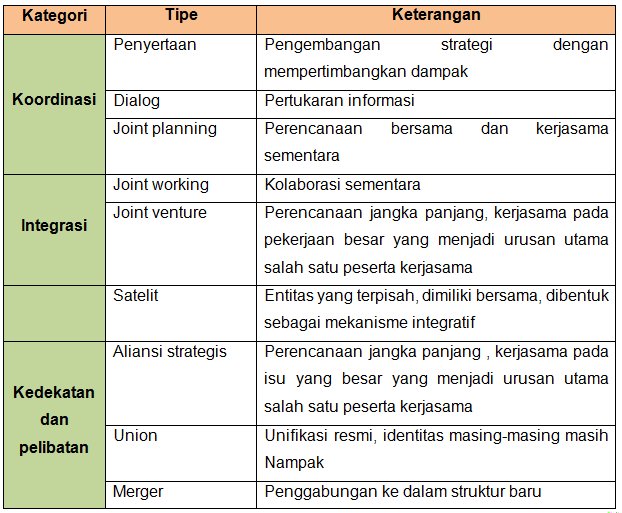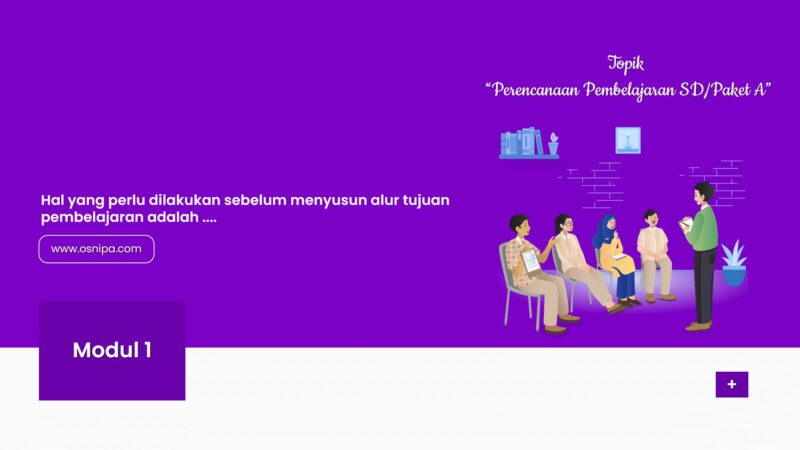Pendekatan Yang Melibatkan Sejumlah Kelembagaan Yang Terkait Dengan Urusan-Urusan Yang Relevan Yaitu: Panduan Lengkap

Collaboration among various institutions is key to addressing relevant issues effectively. By fostering a united approach, these institutions can share knowledge, resources, and strategies that are vital for tackling complex challenges. Pendekatan yang melibatkan sejumlah kelembagaan yang terkait dengan urusan-urusan yang relevan yaitu focuses on creating synergistic efforts, ensuring that all angles are considered.
This method enhances efficiency and improves outcomes, benefiting communities and stakeholders alike. Engaging multiple perspectives not only enriches the dialogue but also cultivates more comprehensive solutions. Embracing this collaborative spirit paves the way for meaningful progress in various sectors.
Pendekatan yang Melibatkan Sejumlah Kelembagaan yang Terkait dengan Urusan-Urusan yang Relevan
In today’s complex world, addressing various issues requires a collaborative effort among different institutions. This approach emphasizes the importance of integrating various stakeholders, including government entities, non-profit organizations, and private sectors, to effectively tackle problems that affect society. By understanding how these institutions can work together, we can enhance our ability to solve pressing issues and improve the quality of life for all.
The Importance of Collaborative Approaches
When we combine the strengths of different institutions, we create a more holistic approach to problem-solving. Here are some key advantages of this collaborative method:
- Diverse Perspectives: Each institution brings unique insights and expertise, fostering innovation and creativity in solutions.
- Resource Sharing: Collaboration allows institutions to pool their resources, whether financial, human, or technological, maximizing efficiency.
- Improved Accountability: Joint efforts enhance transparency, ensuring that all stakeholders are held responsible for their contributions and outcomes.
- Increased Community Trust: When institutions work together, they build trust within the community, as citizens see a united front addressing their needs.
Identifying Relevant Institutions
To implement an effective collaborative approach, it’s crucial to identify which institutions play a role in the relevant affairs. These institutions typically fall into several categories:
Government Agencies
Government entities are often at the forefront of addressing societal issues. They create policies and regulations that guide how problems are managed. Different government levels, from local to national, each play distinct roles:
– **Local Governments:** Focus on community needs, such as public health, education, and infrastructure.
– **State Governments:** Develop policies that affect broader areas like economic development and public safety.
– **Federal Governments:** Handle national issues, including environmental protection and immigration.
Non-Profit Organizations
Non-profits often fill gaps left by government entities, addressing specific community needs. They engage in advocacy, provide services, and mobilize resources. Their strengths include:
– **Community Engagement:** Non-profits often have strong ties to local communities, making them effective at identifying and addressing specific needs.
– **Specialization:** Many non-profits focus on particular issues, such as education, health care, or environmental conservation, allowing for targeted efforts.
Private Sector
Businesses can play a pivotal role in collaborative approaches. They can provide funding, innovative technologies, and expertise. Their contributions are vital in:
– **Sustainable Practices:** Many companies are now focusing on corporate social responsibility, investing in projects that benefit communities and the environment.
– **Job Creation:** By partnering with institutions, businesses can generate new employment opportunities, driving economic growth.
Designing Effective Collaborative Strategies
Once relevant institutions are identified, the next step is to design strategies that promote effective collaboration. Consider the following components:
Establishing Clear Objectives
Setting clear, measurable objectives helps align the efforts of all institutions involved. These goals should be:
– **Specific:** Clearly define what you aim to achieve.
– **Measurable:** Determine how you will track progress.
– **Achievable:** Ensure that the objectives can realistically be met given the resources available.
– **Relevant:** Align goals with the needs of the community and the capacities of the institutions.
– **Time-bound:** Set a timeframe for achieving objectives.
Building Trust and Relationships
Trust is the cornerstone of successful collaboration. Building strong relationships among institutions involves:
– **Open Communication:** Establish regular communication channels to ensure everyone is informed and engaged.
– **Respect for Each Other’s Roles:** Acknowledge the unique contributions of each institution and foster an environment of mutual respect.
– **Conflict Resolution Mechanisms:** Develop protocols for resolving disputes quickly and effectively to maintain collaborative spirit.
Developing Collaborative Frameworks
Creating a structured framework helps guide the collaboration process. Consider the following elements:
– **Partnership Agreements:** Draft formal agreements that outline the roles, responsibilities, and expectations of each institution.
– **Resource Allocation Plans:** Create a detailed plan for how resources will be shared and utilized among institutions.
– **Evaluation and Feedback Mechanisms:** Implement systems to evaluate the collaboration’s effectiveness and allow for constructive feedback.
Case Studies of Successful Collaboration
Examining real-world examples of successful collaboration can provide valuable insights into how to implement these strategies effectively. Below are some notable examples:
Community Health Initiatives
In many regions, local governments, health agencies, and non-profits have joined forces to address public health crises. For instance, during the COVID-19 pandemic, various institutions collaborated to provide timely information, resources for vaccinations, and health services.
Environmental Conservation Projects
Various non-profits and governmental bodies have worked together to tackle environmental challenges. For example, a coalition of local governments, businesses, and environmental organizations may collaborate on clean-up efforts and promote sustainability practices in communities.
Challenges in Collaborative Approaches
While collaboration among institutions has many benefits, it also poses certain challenges. Understanding these challenges helps in better preparation for cooperation.
Differences in Organizational Culture
Each institution has its own culture and way of operating. These differences can lead to misunderstandings and conflicts. Addressing this requires sensitivity and willingness to adapt.
Resource Limitations
Not all institutions have the same level of resources. Some may struggle with funding or staffing, which can hinder the collaborative effort. Establishing a resource-sharing plan can mitigate this issue.
Complexity of Coordination
Coordinating multiple institutions can be complicated. It requires a clear leadership structure and defined roles to ensure everyone knows their responsibilities. Regular meetings can help maintain coordination and address any emerging issues.
Future Directions for Collaborative Approaches
As the world becomes increasingly interconnected, the need for collaborative approaches will only grow. Here are some potential future directions:
Embracing Technology
Technology will continue to play a critical role in collaboration. Online platforms can facilitate better communication, data sharing, and project management among institutions. This can lead to more efficient and effective collaborations.
Focus on Inclusivity
Ensuring that all community voices are heard is vital. Future collaborations should prioritize inclusivity, engaging diverse populations and considering their needs in decision-making processes.
Strengthening Policy Frameworks
Government policies should support and facilitate collaboration among institutions. Developing policies that encourage partnerships and provide funding for joint initiatives can enhance collaborative efforts.
To sum up, a collaborative approach involving various institutions proves essential in addressing relevant issues within society. By understanding the roles and strengths of different stakeholders, establishing clear objectives, and maintaining strong communication, institutions can work together to create meaningful, positive changes. Emphasizing continuous improvement and adaptation will help foster effective and sustainable collaborations for years to come.
Pelayanan Publik yang Belum Menerapkan WOG
Frequently Asked Questions
What types of institutions are involved in this approach?
This approach involves various institutions that play significant roles in relevant sectors. These can include government agencies, non-governmental organizations (NGOs), educational institutions, private sector companies, and community-based organizations. Each institution contributes its expertise and resources, enabling a comprehensive strategy to address the issues at hand.
How does collaboration among institutions enhance effectiveness?
Collaboration among institutions enhances effectiveness by pooling diverse skills, knowledge, and resources. When institutions work together, they can leverage each other’s strengths, share information, and coordinate efforts to achieve common goals. This synergy often leads to more innovative solutions and a more comprehensive understanding of the challenges involved.
What are the benefits of involving multiple institutions in relevant matters?
Involving multiple institutions in relevant matters leads to a broader perspective on issues, as each institution brings unique insights and experiences. This collaboration fosters accountability, promotes shared ownership of outcomes, and encourages a more inclusive decision-making process, resulting in solutions that are more likely to meet the needs of various stakeholders.
How can institutions ensure effective communication during collaboration?
Institutions can ensure effective communication during collaboration by establishing clear communication channels, setting common goals, and regularly scheduled meetings. They should also create an environment that encourages open dialogue and feedback among all parties. Utilizing collaborative tools, such as shared platforms and project management software, can help maintain transparency and track progress.
What role does leadership play in this institutional approach?
Leadership plays a crucial role in this institutional approach by guiding the vision and fostering a collaborative culture. Strong leaders can inspire trust, motivate teams, and facilitate discussions among diverse stakeholders. They also help to align the objectives of different institutions, ensuring that all efforts are directed toward achieving the common goals of the collaboration.
Final Thoughts
Pendekatan yang melibatkan sejumlah kelembagaan yang terkait dengan urusan-urusan yang relevan yaitu sangat penting dalam mencapai keberhasilan suatu program. Kerja sama antar lembaga memperkuat koordinasi dan sinergi untuk mencapai tujuan bersama. Setiap institusi membawa keahlian dan perspektif yang berbeda, menghasilkan solusi yang lebih komprehensif.
Dengan kolaborasi yang efektif, tantangan yang ada dapat diatasi dengan lebih baik. Pendekatan ini tidak hanya mempercepat proses, tetapi juga meningkatkan kualitas hasil yang dicapai. Oleh karena itu, memperkuat keterlibatan kelembagaan menjadi kunci dalam menjalankan inisiatif yang berdampak.







